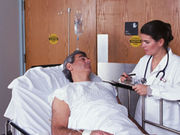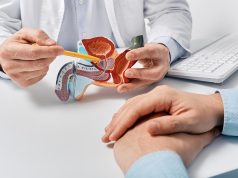Preoperative prevalences of 58 and 31 percent, respectively, decrease significantly postoperatively
FRIDAY, Nov. 18, 2016 (HealthDay News) — Many males undergoing anterior urethroplasty experience improvement in urgency and urge incontinence, according to a study published in the December issue of The Journal of Urology.
Lindsay A. Hampson, M.D., from the University of California, San Francisco, and colleagues examined urinary urgency and urge incontinence before and after anterior urethroplasty. They retrospectively identified male patients who underwent one-stage anterior urethroplasty. Participants had preoperative and two-month or greater postoperative subjective urinary urgency assessments. Symptom and follow-up data were available in 439 and 305 patients, respectively, on urgency and urge incontinence.
The researchers found that 58 and 31 percent of the men, respectively, reported urgency and urge incontinence preoperatively. This decreased to 40 and 12 percent, respectively, postoperatively (both P < 0.01). Overall, 37 and 74 percent of the men reported improvement in urgency and urge incontinence, respectively. Few men without preoperative symptoms reported worse symptoms (9 and 5 percent, respectively, for urgency and urge incontinence). Men with a higher body mass index were more likely to develop new urgency (odds ratio, 1.09). Improvement in urgency was less likely for men with stricture recurrence (odds ratio, 0.24). Older men were more likely to have new urge incontinence and less likely to notice urge symptom improvement (odds ratios, 1.06 and 0.92, respectively).
“The majority of men experience symptom stability or improvement in urinary urge symptoms following anterior urethroplasty,” the authors write.
Full Text
Copyright © 2016 HealthDay. All rights reserved.








